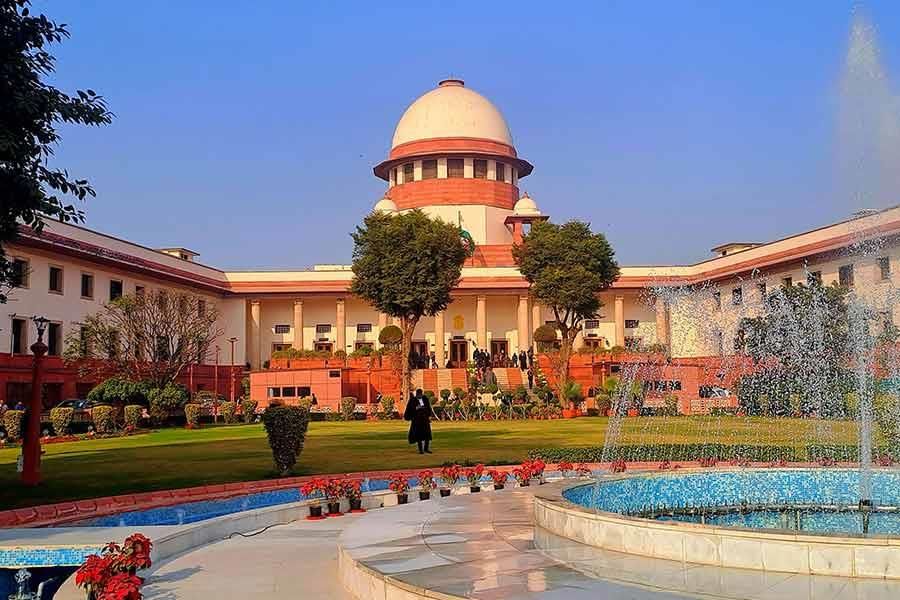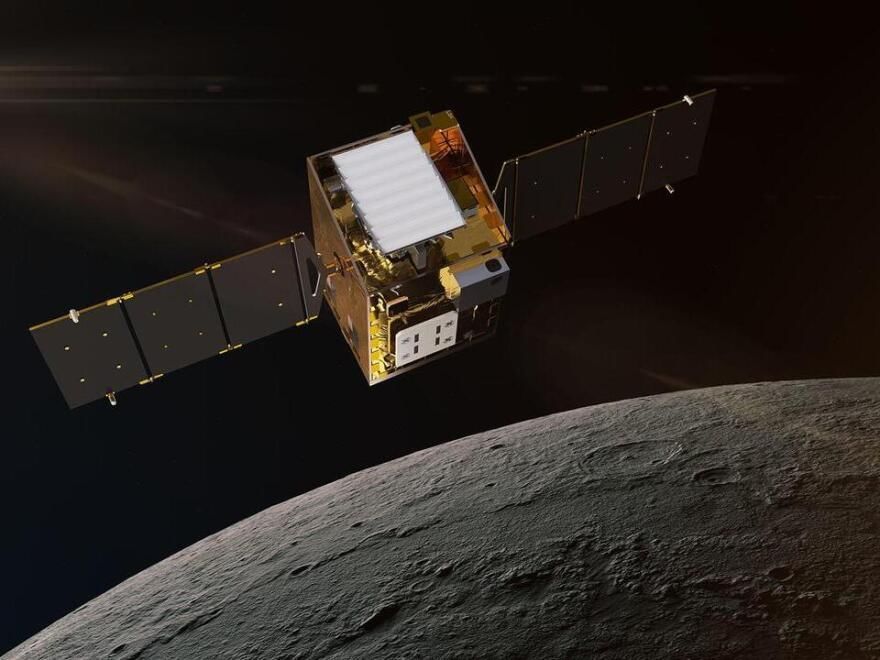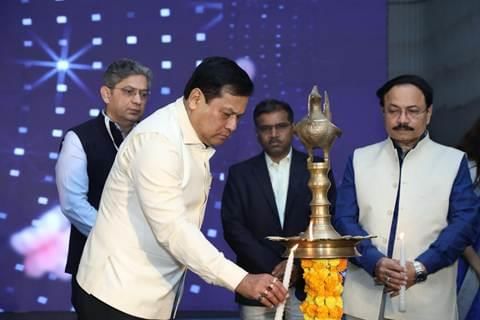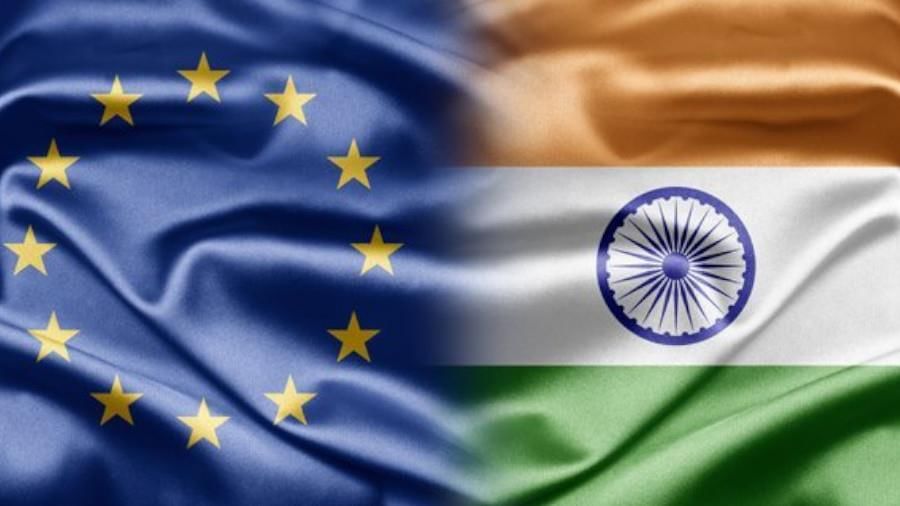UPSC Daily Current Affairs: 28th February 2025 | Current Affairs & Hindu Analysis: Daily, Weekly & Monthly PDF Download
GS2/Polity
Supreme Court Stays Lokpal Order on Corruption Complaint Against High Court Judge
 Why in News?
Why in News?
The Supreme Court has recently put a hold on an order that had taken cognizance of a corruption complaint against an unnamed High Court (HC) judge. The Lokpal bench led by former Supreme Court judge A.M. Khanwilkar claimed its authority to hear such cases under the Lokpal and Lokayuktas Act, 2013. However, the Supreme Court found this situation concerning and has halted the proceedings, with the next hearing scheduled for March 18.
- The Supreme Court has emphasized the need to safeguard judicial independence.
- Concerns have been raised regarding potential executive overreach with the Lokpal's involvement in judicial matters.
- The Supreme Court's decision reflects the importance of established procedures for investigating complaints against judges.
Additional Details
- Judicial Independence: The Supreme Court has historically balanced the criticism of judges with the necessity to protect judicial independence.
- Concerns over Executive Overreach: Since the Lokpal is an executive statutory body, its ability to hear complaints against judges could undermine judicial autonomy.
- Legal Provisions: Under the Indian Penal Code (IPC) and the Bharatiya Nyaya Sanhita (BNS), judges cannot be charged for actions performed during official duties.
- The landmark case K Veeraswami v Union of India (1991) established that judges, being public servants, can be investigated for corruption, but such proceedings require Presidential sanction based on the Chief Justice of India's advice.
- There is a distinct difference between the procedures for filing cases against judges compared to impeachment processes, which require Parliamentary approval.
- Allegations Against the HC Judge: Two complaints were filed against an HC judge for allegedly influencing judicial proceedings involving a private company, which was previously a client of the judge.
- The Lokpal's ruling did not address the case's merits but focused on its jurisdiction over HC judges.
- The Lokpal Act applies to public servants but does not explicitly include judges, creating ambiguity regarding its jurisdiction.
- Despite claiming jurisdiction, the Lokpal has referred the matter to the Chief Justice of India for guidance before proceeding.
The Supreme Court's intervention highlights significant concerns regarding potential executive overreach and the necessity to protect judicial independence. This case further emphasizes the ongoing legal ambiguities concerning the Lokpal's authority over the judiciary. The upcoming ruling by the Supreme Court will have substantial implications for the accountability mechanisms applicable to higher judiciary officials in India.
GS3/Environment
Discovery of a New Frog Species: Minervarya ghatiborealis
Why in News?
Researchers in the western Maharashtra region have identified a new endemic species of frog named Minervarya ghatiborealis, highlighting the biodiversity of the Sahyadri mountain range.
- The frog was discovered in Mahabaleshwar, situated in the north-western Ghats of the Sahyadri range in Maharashtra.
- Its name derives from the Sanskrit word ‘Ghati’, meaning western, and the Latin word ‘Borealis’, meaning northern region.
- This species is part of the genus Minervarya, commonly referred to as Cricket frogs.
Additional Details
- Distinct Features: Frogs belonging to the Minervarya genus can be recognized by the parallel lines present on their abdomens.
- Nesting Habits: They typically nest near standing water or small springs and produce vocalizations akin to those of nightingales.
- The breeding vocalizations of male Minervarya ghatiborealis are notably different from other species within the same genus.
This discovery enriches our understanding of amphibian diversity in the region and underscores the importance of conserving such unique species in their natural habitats.
GS1/History & Culture
Chandra Shekhar Azad and his Contributions
 Why in News?
Why in News?
Leaders from various political backgrounds commemorated the martyrdom day of the freedom fighter, Chandra Shekhar Azad, on February 27, 1931.
- Chandra Shekhar Azad (1906–1931) was a pivotal revolutionary in India's struggle for independence.
- Born in Bhabhra, Madhya Pradesh, he initially joined Gandhi's Non-Cooperation Movement at the age of 15.
- He later shifted to armed revolution following the suspension of the Non-Cooperation Movement.
- Azad reorganized the Hindustan Republican Association (HRA) into the Hindustan Socialist Republican Association (HSRA) with Bhagat Singh.
- He vowed never to be captured alive and ultimately sacrificed himself in a confrontation with police.
Additional Details
- Non-Cooperation Movement (1921): Azad was arrested at 15 and declared his name as “Azad” (Free) in court, receiving 15 lashes as punishment.
- Joining HRA (1924): He became a member of Ram Prasad Bismil’s HRA and was involved in raising funds through political activities.
- Kakori Train Robbery (1925): Azad played a role in looting a British train carrying treasury money and managed to escape capture while others were arrested.
- Reorganizing HSRA (1928): He transformed the HRA into the HSRA, emphasizing socialist ideology within the organization.
- Assassination of John Saunders (1928): In response to Lala Lajpat Rai's death, Azad personally executed a police officer in retribution.
- Attempt to Blow Up Lord Irwin’s Train (1929): Azad planned an assassination attempt on Viceroy Lord Irwin, which ultimately failed.
- Final Stand (1931): During a police ambush, Azad killed three officers, ensured the escape of his comrade, and took his own life with his last bullet.
Chandra Shekhar Azad remains a symbol of bravery and commitment to India's freedom struggle, inspiring future generations with his dedication and sacrifices.
GS3/Science and Technology
Blood Moon
 Why in News?
Why in News?
A total lunar eclipse, commonly referred to as a blood moon, is set to illuminate the sky on March 14. This celestial event will be observable in various regions worldwide, although some locations, such as India, will miss the visibility due to daytime occurrences.
- A blood moon occurs during a total lunar eclipse when the Earth is positioned directly between the Sun and the Moon.
- The phenomenon is caused by Rayleigh scattering, resulting in a reddish appearance of the Moon.
- The last total lunar eclipse occurred nearly three years ago, in 2022.
Additional Details
- How it occurs: A blood moon occurs when the Earth casts its shadow on the Moon, causing it to appear red or orange due to the scattering of shorter-wavelength light (blue) and the passage of longer-wavelength light (red) through the Earth's atmosphere.
- Visible Locations: This blood moon will be visible in America, Western Europe, Western Africa, and the North and South Atlantic Ocean, but not in India due to daylight.
- During totality, the entire Moon is enveloped in the Earth's darkest shadow, known as the umbra, enhancing its red-orange hue.
This upcoming total lunar eclipse marks a significant astronomical event that captures the interest of skywatchers globally. Observers are encouraged to check local timings and conditions to witness this spectacular occurrence.
GS2/Governance
Animal Welfare Board of India (AWBI)
Why in News?
The central government is revamping the guidelines of the Animal Welfare Board of India (AWBI) to ensure they are more relevant to contemporary issues and to enhance their effective implementation in order to prevent animal cruelty.
- The AWBI is a statutory body established in 1962 under the Prevention of Cruelty to Animals Act, 1960.
- It was initiated under the leadership of Late Smt. Rukmini Devi Arundale, a noted humanitarian.
- The Board's primary mandate is to promote animal welfare and protect animals from unnecessary pain and suffering.
- Its headquarters is located in Ballabhgarh, Haryana.
Additional Details
- Advisory Role: The AWBI advises both state and central governments on animal welfare issues, including addressing cruelty against animals.
- The Board regularly communicates with State Governments and Union Territories (UTs) regarding complaints and urges them to take necessary legal actions against offenders.
- State Authorities: These authorities are empowered to initiate actions against cruelty towards animals in accordance with the law.
- The AWBI provides financial and other forms of assistance to local Animal Welfare Organisations to promote the humane treatment of animals.
- Membership: The Board is composed of 28 members, whose term lasts for three years. It includes representatives from various government organizations, animal rights activists, and parliamentarians.
The AWBI's efforts are crucial in fostering a society that respects and protects animal rights, reflecting a growing awareness of animal welfare issues in India.
GS3/Science and Technology
Lunar Trailblazer Spacecraft
 Why in News?
Why in News?
Recently, a SpaceX Falcon 9 rocket successfully launched from the Kennedy Space Center in Cape Canaveral, carrying NASA’s Lunar Trailblazer orbiter. This mission is significant as it aims to enhance our understanding of water on the moon's surface.
- The Lunar Trailblazer is a NASA initiative designed to locate and map water on the moon.
- It is approximately the size of a dishwasher, weighing about 200 kg with solar panels deployed.
- The spacecraft will perform multiple moon flybys and looping orbits over several months.
- It will eventually orbit the moon at an altitude of roughly 100 km.
Additional Details
- Mission Objectives: The spacecraft aims to collect high-resolution images of specific lunar areas to analyze the form, distribution, and abundance of water, thereby improving understanding of the lunar water cycle.
- Instruments on Board:
- High-resolution Volatiles and Minerals Moon Mapper (HVM3): This instrument will detect the light patterns emitted by water on the moon’s surface.
- Lunar Thermal Mapper (LTM): It is tasked with mapping and measuring the temperature of the lunar surface.
- Both instruments will work together to identify various forms of water, mineral composition, and temperature of the moon's surface.
- The Lunar Trailblazer spacecraft was developed by Lockheed Martin’s space division.
This mission represents a significant step in lunar exploration, aiming to unravel the mysteries of water on the moon and its implications for future lunar missions.
GS3/Economy
Initiative Launched to Standardise and Streamline Operations of India’s Major Ports
 Why in News?
Why in News?
Union Minister Shri Sarbananda Sonowal has launched significant initiatives under the Ministry of Ports, Shipping, and Waterways (MoPSW) aimed at modernizing India's maritime infrastructure. This initiative is designed to enhance India's presence in global trade while promoting sustainability in port operations.
- Introduction of the One Nation-One Port Process (ONOP) to standardize port operations.
- Launch of the Sagar Ankalan - Logistics Port Performance Index (LPPI) to improve port competitiveness.
- Formation of the Bharat Global Ports Consortium to bolster maritime trade.
- Implementation of the MAITRI initiative for digital transformation in trade.
- Establishment of the National Centre of Excellence in Green Port and Shipping (NCoEGPS) to advance sustainability.
- Announcement of India Maritime Week 2025 to showcase maritime growth.
Additional Details
- One Nation-One Port Process (ONOP): This initiative aims to eliminate inconsistencies in port documentation, thereby reducing inefficiencies and operational costs. The Ministry has achieved a 33% reduction in container operation documents and a 29% reduction in bulk cargo documents.
- Sagar Ankalan - Logistics Port Performance Index (LPPI): This index evaluates essential metrics such as cargo handling and turnaround times, fostering transparency and efficiency in port operations.
- Bharat Global Ports Consortium: Aimed at enhancing logistics and trade connectivity by integrating various operations, it supports initiatives like 'Make in India.'
- MAITRI: The Master Application for International Trade and Regulatory Interface is focused on streamlining trade processes through AI and blockchain technologies, facilitating operational efficiency.
- National Centre of Excellence in Green Port and Shipping (NCoEGPS): This center promotes sustainable practices in maritime operations, focusing on reducing the carbon footprint and adopting cleaner fuels.
The Union Minister emphasized that India's Blue Economy is crucial for job creation, trade expansion, and economic sustainability. The government is committed to making India a top 10 shipbuilding nation by 2030 and creating a world-class maritime ecosystem to strengthen India's position as a global maritime powerhouse.
GS2/International Relations
Why India-EU Partnership Matters
 Why in News?
Why in News?
A large delegation from the European Commission, consisting of 22 out of 27 European Commissioners and led by President Ursula von der Leyen, is visiting New Delhi for a two-day engagement. This unprecedented visit highlights the strengthening ties between India and the European Union (EU) across various sectors, including trade, technology, green energy, and defense. Coinciding with the India-EU Trade and Technology Council (TTC) meetings, it aims to enhance cooperation and investment opportunities.
- The visit marks a significant step in India-EU relations.
- Key areas of cooperation include trade, technology, green energy, and defense.
- Negotiations for a Free Trade Agreement (FTA) have resumed after a 15-year hiatus.
Additional Details
- Historical Context:India established diplomatic relations with the European Economic Community (EEC) in 1962. Milestones include:
- 1993: Signing of the Joint Political Statement.
- 1994: Establishment of the Cooperation Agreement.
- 2000: First India-EU Summit in Lisbon.
- 2004: Upgrade to Strategic Partnership.
- 2020: Adoption of the India-EU Strategic Partnership Roadmap to 2025.
- Trade and Investments: The EU is India's largest trading partner, with bilateral trade in goods reaching $135 billion in FY 2023-24. The FTA aims to enhance trade ties by reducing tariffs and boosting investments.
- Technology and Digital Cooperation: Collaboration includes emerging technologies, semiconductor R&D, and high-performance computing initiatives.
- Green Energy Cooperation: Initiatives in green hydrogen and renewable energy aim to support India's net-zero goals by 2070.
- Defence and Space Collaboration: Joint naval exercises and cooperation in space missions highlight the strategic partnership.
- People-to-People Ties: A significant Indian diaspora in the EU enhances cultural and educational exchanges, with thousands benefiting from Erasmus scholarships.
The visit by the European Commission College of Commissioners signifies a pivotal moment in India-EU relations. By intensifying collaboration in trade, technology, green energy, and defense, both parties aim to forge a robust strategic partnership. The ongoing FTA negotiations and collaborative projects in semiconductors and hydrogen energy are set to strengthen bilateral ties, fostering mutual economic growth and establishing global leadership. As geopolitical dynamics evolve, India and the EU are committed to building a resilient, sustainable, and secure future together.
GS2/International Relations
Hague Service Convention
Why in News?
The U.S. Securities and Exchange Commission has recently sought assistance from India's Union Law Ministry, which acts as the central authority under the Hague Service Convention, to execute summons on Gautam Adani and his associates.
- The Hague Service Convention was adopted in 1965 to ensure defendants in foreign jurisdictions receive timely notice of legal proceedings.
- India and the U.S. are among the 84 signatory states to the Convention, which mandates the designation of central authorities for processing service requests.
Additional Details
- Purpose of the Hague Service Convention: This multilateral treaty ensures that defendants are properly notified of legal actions against them in a timely manner, facilitating proof of service.
- Modes of Service: The primary mode is through designated central authorities, but other methods include postal service, diplomatic channels, and direct communication between judicial officers.
- Service in India: India acceded to the Convention on November 23, 2006, with reservations against alternative service methods under Article 10.
- All service requests must be in English or accompanied by an English translation, and can only be executed through India's Ministry of Law and Justice.
- The Ministry can reject requests but must provide reasons for refusal, ensuring that sovereignty and security are respected.
- Once the central authority processes the request, the service is treated as a summons issued by an Indian court under the Code of Civil Procedure, 1908.
The process typically takes six to eight months, and a default judgment may be issued if a foreign government fails to cooperate in serving a summons, provided specific conditions under Article 15 are met. Notably, India allows its courts to issue default judgments in cross-border disputes under these circumstances.
GS3/Environment
Idukki Wildlife Sanctuary (IWL)
Why in News?
Recently, a three-day off-season faunal survey conducted in the Idukki Wildlife Sanctuary revealed the discovery of 14 bird species, 15 butterfly species, and 8 species of odonates that had not been previously recorded in the sanctuary.
- IWL was established in 1976 and is located within Idukki District, Kerala.
- The sanctuary spans an area of 77 sq.km surrounding the Idukki Arch Dam.
- Altitude ranges from 450 to 1272 meters, with Vanjur Medu being the highest peak.
- The major rivers include Periyar and Cheruthoniar.
- It receives an average rainfall of 3800 mm.
Additional Details
- Vegetation: Dominant types include West Coast Tropical Evergreen forests, Semi Evergreen forests, Moist Deciduous Forests, Hill shoals, and Grasslands.
- Flora: The forests feature diverse species such as teak, rosewood, jackfruit, ebony, cinnamon, and various bamboo species.
- Fauna: The sanctuary is home to wildlife including elephants, bison, sambar deer, wild dogs, tigers, wild boar, and various snake species like cobra and krait.
- Bird Species: Notable birds include jungle fowl, myna, laughing thrush, black bulbul, peafowl, woodpecker, and kingfisher.
- The Idukki Wildlife Sanctuary also houses the endangered Nilgiri Tahr.
This recent survey highlights the ecological importance of Idukki Wildlife Sanctuary and the need for ongoing conservation efforts to protect its diverse flora and fauna.
GS2/Polity
Counting Matters: On Delimitation, Federalism, and the Census
Why in News?
Tamil Nadu Chief Minister M.K. Stalin has convened an all-party meeting on March 5 to discuss the delimitation exercise, aiming to initiate a national dialogue on this crucial issue.
- Tamil Nadu is concerned about potential loss of Lok Sabha seats due to lower population growth.
- There is apprehension that effective population control measures in Tamil Nadu may lead to a reduction in political representation.
Additional Details
- Loss of Parliamentary Representation: Tamil Nadu fears that its Lok Sabha seats may decrease as it has a lower population growth rate compared to northern states. For instance, Tamil Nadu's electorate grew by 171% (1971-2024) while undivided Bihar's grew by 233%, potentially diminishing Tamil Nadu's political influence.
- Penalty for Population Control Success: The state believes that its successful population control measures will be penalized, as states with higher fertility rates, such as Uttar Pradesh and Bihar, may gain seats while Tamil Nadu and Kerala could lose representation despite better health and development indicators.
- Potential Impacts of Delimitation:
- Shift in Political Power Dynamics: Increased representation from states with higher populations could shift political influence from southern and western states.
- Federal Imbalance and Regional Inequality: States like Kerala, which have effective population policies, may be underrepresented despite their contributions to national development.
- Resource Allocation Disparities: More seats for northern states could lead to increased influence over Union Budget allocations, potentially disadvantaging states with fewer representatives.
- Political Tensions and Regional Discontent: Perceived favoritism towards northern states may heighten regional tensions, prompting political agitation and demands for policy reassessment.
- Reasons for the Delimitation Freeze:
- To ensure fairness among states with varying population growth and protect the political representation of states that successfully implemented population control policies.
- To maintain the balance of power in federal governance, preventing over-representation of certain regions and preserving geographical balance in national decision-making.
- Union Government Steps:
- Delimitation Freeze Extension: The government extended the freeze on parliamentary seat allocation based on population through the 42nd Amendment (1976) until 2001, and later extended it to 2026 via the 84th Amendment (2001).
- Equitable Resource Allocation: The 15th Finance Commission (2021-26) adopted a balanced approach that included both population (2011 Census) and demographic performance to ensure fair distribution of resources.
- Consultative Processes: The Union government has engaged with Southern states through inter-state council meetings and Finance Commission consultations to address concerns regarding fair representation and resource distribution.
In summary, the delimitation exercise poses significant challenges for Tamil Nadu and other southern states, as it may lead to a redistribution of political power that undermines their contributions to national development. Ongoing dialogue and equitable approaches are essential to address these concerns effectively.
|
44 videos|5271 docs|1113 tests
|
FAQs on UPSC Daily Current Affairs: 28th February 2025 - Current Affairs & Hindu Analysis: Daily, Weekly & Monthly
| 1. What is the significance of the Supreme Court's stay on the Lokpal order regarding the corruption complaint against a High Court judge? |  |
| 2. What are the implications of discovering a new frog species, Minervarya ghatiborealis, for biodiversity? |  |
| 3. Who was Chandra Shekhar Azad and what were his contributions to India's freedom struggle? |  |
| 4. What is a Blood Moon and why is it significant in astronomy? |  |
| 5. Why is the initiative to standardize and streamline operations of India’s major ports important? |  |
















